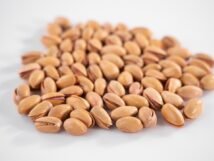The NHS Diet Plan is a comprehensive and balanced meal plan designed to help individuals achieve and maintain a healthy weight. It is based on the principles of a healthy diet, which includes consuming a variety of nutrient-dense foods in appropriate portions. Following a healthy diet plan is crucial for overall health and wellness, as it provides the body with the necessary nutrients it needs to function optimally.
Key Takeaways
- The NHS Diet Plan Menu is a balanced and healthy approach to eating.
- Understanding your nutritional needs is key to creating a successful meal plan.
- Incorporating more fruits and vegetables into your diet is essential for optimal health.
- Cutting down on processed foods and sugars can improve overall health and wellbeing.
- Choosing lean proteins and healthy fats is important for maintaining a balanced diet.
Understanding Your Nutritional Needs
To create a successful diet plan, it is important to understand your nutritional needs. This involves understanding the concept of macronutrients and micronutrients. Macronutrients are the nutrients that provide energy to the body and include carbohydrates, proteins, and fats. Micronutrients, on the other hand, are essential for proper bodily functions and include vitamins and minerals.
Calculating your daily calorie needs is an important step in understanding your nutritional needs. This can be done by determining your basal metabolic rate (BMR), which is the number of calories your body needs to maintain basic bodily functions at rest. Once you have calculated your BMR, you can then factor in your activity level to determine your total daily calorie needs.
Tracking your food intake is another important aspect of understanding your nutritional needs. This can be done through various methods such as keeping a food diary or using a mobile app. By tracking your food intake, you can ensure that you are consuming the appropriate amount of macronutrients and micronutrients for your individual needs.
Creating a Balanced Meal Plan
A balanced meal plan is essential for meeting your nutritional needs and maintaining a healthy weight. It involves consuming a variety of foods from different food groups in appropriate portions. A balanced meal plan should include carbohydrates, proteins, fats, fruits, vegetables, and dairy or dairy alternatives.
To create a balanced meal plan, start by determining the appropriate portion sizes for each food group. The NHS provides guidelines on portion sizes for different food groups, which can be used as a reference. Aim to include a source of carbohydrates, such as whole grains or starchy vegetables, a source of protein, such as lean meats or plant-based proteins, and a source of healthy fats, such as nuts or avocados, in each meal.
Sample meal plan:
- Breakfast: Oatmeal topped with berries and a tablespoon of almond butter
- Snack: Greek yogurt with sliced almonds and a drizzle of honey
- Lunch: Grilled chicken breast with quinoa and roasted vegetables
- Snack: Carrot sticks with hummus
- Dinner: Baked salmon with brown rice and steamed broccoli
- Snack: Apple slices with peanut butter
Incorporating More Fruits and Vegetables into Your Diet
| Benefits of Incorporating More Fruits and Vegetables into Your Diet | Recommended Daily Intake | Examples of Fruits and Vegetables |
|---|---|---|
| Provides essential vitamins and minerals | 5 servings (2 fruits, 3 vegetables) | Apples, bananas, carrots, spinach, broccoli, tomatoes |
| Reduces risk of chronic diseases | 7-10 servings (3-4 fruits, 4-6 vegetables) | Oranges, strawberries, kale, bell peppers, sweet potatoes, green beans |
| Improves digestion and bowel function | Varies based on individual needs | Blueberries, raspberries, cucumbers, zucchini, cauliflower, asparagus |
| Helps maintain a healthy weight | Varies based on individual needs | Grapefruit, pears, celery, eggplant, Brussels sprouts, cabbage |
Fruits and vegetables are an essential part of a healthy diet. They are rich in vitamins, minerals, and antioxidants, which are important for maintaining good health and preventing chronic diseases. Incorporating more fruits and vegetables into your diet can be done in various ways.
One way to incorporate more fruits and vegetables into your diet is by adding them to your meals. For example, you can add sliced bananas or berries to your breakfast cereal or yogurt, include a side salad with your lunch or dinner, or add extra vegetables to your stir-fries or pasta dishes.
Another way to increase your intake of fruits and vegetables is by snacking on them throughout the day. Keep a bowl of fresh fruit on your kitchen counter or pack pre-cut vegetables in small containers for easy snacking on the go.
Recipe ideas:
- Fruit smoothie: Blend together a banana, berries, spinach, almond milk, and a scoop of protein powder for a nutritious and delicious smoothie.
- Vegetable stir-fry: Sauté a variety of colorful vegetables such as bell peppers, broccoli, carrots, and snap peas in a small amount of olive oil and season with soy sauce and garlic for a quick and healthy meal.
Cutting Down on Processed Foods and Sugars
Processed foods and sugars can have negative effects on health when consumed in excess. They are often high in calories, unhealthy fats, added sugars, and sodium, which can contribute to weight gain, high blood pressure, and other health problems. Cutting down on processed foods and sugars is important for maintaining a healthy diet.
To reduce your intake of processed foods, focus on consuming whole, unprocessed foods as much as possible. This includes foods such as fruits, vegetables, whole grains, lean proteins, and healthy fats. Avoid foods that come in packages or have long ingredient lists with added sugars or unhealthy fats.
When it comes to sugars, it is important to be mindful of your intake. Limit your consumption of sugary beverages such as soda, fruit juices, and energy drinks. Instead, opt for water or unsweetened beverages. Choose whole fruits over fruit juices or sweetened snacks.
Healthy alternatives:
- Instead of potato chips, opt for air-popped popcorn or homemade kale chips.
- Instead of sugary desserts, satisfy your sweet tooth with fresh fruit or a small piece of dark chocolate.
Choosing Lean Proteins and Healthy Fats

Lean proteins and healthy fats are important components of a healthy diet. Lean proteins provide essential amino acids for muscle growth and repair, while healthy fats are necessary for proper brain function and hormone production. Choosing the right sources of lean proteins and healthy fats is crucial for maintaining a balanced diet.
When it comes to lean proteins, opt for sources such as skinless chicken breast, turkey breast, fish, tofu, beans, lentils, and low-fat dairy products. These sources are low in saturated fat and high in protein.
For healthy fats, choose sources such as avocados, nuts and seeds, olive oil, and fatty fish like salmon or trout. These sources are rich in monounsaturated and polyunsaturated fats, which are beneficial for heart health.
Recipe ideas:
- Grilled chicken salad: Toss grilled chicken breast with mixed greens, cherry tomatoes, cucumber slices, and a drizzle of olive oil and balsamic vinegar for a light and satisfying meal.
- Baked salmon with roasted vegetables: Season salmon fillets with lemon juice, garlic, and herbs, then bake in the oven. Serve with a side of roasted vegetables for a nutritious and flavorful dinner.
Meal Prepping and Planning for Success
Meal prepping and planning is a great way to stay on track with your healthy diet plan. It involves preparing meals and snacks in advance, so they are readily available when you need them. Meal prepping and planning can save time, money, and help you make healthier choices throughout the week.
Benefits of meal prepping and planning include:
- Saving time: By preparing meals in advance, you can save time during busy weekdays.
- Saving money: By planning your meals ahead of time, you can make a grocery list and avoid impulse purchases.
- Making healthier choices: When you have healthy meals and snacks readily available, you are less likely to reach for unhealthy options.
To meal prep and plan for success, start by creating a weekly meal plan. This involves deciding what meals you will have for breakfast, lunch, dinner, and snacks throughout the week. Once you have your meal plan, make a grocery list and purchase all the necessary ingredients.
On a designated day, set aside time to prepare your meals and snacks for the week. This can involve cooking large batches of grains or proteins, chopping vegetables, or portioning out snacks into individual containers. Store your prepped meals and snacks in the refrigerator or freezer for easy access throughout the week.
Tips for staying on track:
- Invest in quality food storage containers to keep your prepped meals fresh.
- Keep healthy snacks, such as pre-cut vegetables or fruit, in your bag or car for when hunger strikes.
- Set aside time each week to plan and prep your meals. Treat it as a non-negotiable appointment with yourself.
Staying Hydrated with Water and Other Beverages
Staying hydrated is crucial for overall health and wellness. Water is essential for proper bodily functions, including digestion, circulation, and temperature regulation. It is important to stay hydrated throughout the day by drinking water and other healthy beverages.
The recommended daily intake of water varies depending on factors such as age, sex, activity level, and climate. As a general guideline, aim to drink at least 8 cups (64 ounces) of water per day. However, individual needs may vary.
In addition to water, there are other healthy beverage options that can contribute to your daily fluid intake. These include herbal teas, unsweetened coffee or tea, and infused water with fruits or herbs.
Healthy beverage options:
- Green tea: Green tea is rich in antioxidants and can provide a gentle energy boost without the jitters.
- Infused water: Add slices of lemon, cucumber, or berries to your water for a refreshing and flavorful twist.
Tips for Dining Out and Social Events
Dining out and attending social events can present challenges when trying to follow a healthy diet plan. However, with some planning and mindful choices, it is possible to make healthier choices in these situations.
When dining out, look for menu options that are grilled, baked, or steamed instead of fried. Choose dishes that are rich in vegetables and lean proteins. Ask for dressings or sauces on the side so you can control the amount you consume. And remember to listen to your body's hunger and fullness cues - stop eating when you are satisfied, not when you are stuffed.
When attending social events, bring a healthy dish to share. This ensures that there will be at least one nutritious option available. Fill your plate with a variety of fruits, vegetables, and lean proteins. Be mindful of portion sizes and enjoy the company of others without overindulging.
Tips for staying on track:
- Look up the menu ahead of time and plan your meal choices in advance.
- Practice portion control by sharing a dish with a friend or asking for a to-go box to take home leftovers.
- Focus on enjoying the company and conversation rather than solely focusing on the food.
Monitoring Your Progress and Making Adjustments as Needed
Monitoring your progress is an important part of following a healthy diet plan. It allows you to track your results and make adjustments as needed to ensure continued success.
There are various ways to monitor your progress, including weighing yourself regularly, taking body measurements, and tracking your food intake and exercise. Choose a method that works best for you and allows you to stay accountable.
If you find that you are not seeing the desired results or are experiencing any negative effects, it may be necessary to make adjustments to your diet plan. This can involve increasing or decreasing portion sizes, adjusting macronutrient ratios, or seeking guidance from a healthcare professional or registered dietitian.
Following a healthy diet plan, such as the NHS Diet Plan menu, is crucial for overall health and wellness. It provides the body with the necessary nutrients it needs to function optimally and helps maintain a healthy weight. By understanding your nutritional needs, creating a balanced meal plan, incorporating more fruits and vegetables into your diet, cutting down on processed foods and sugars, choosing lean proteins and healthy fats, meal prepping and planning for success, staying hydrated with water and other beverages, navigating dining out and social events, monitoring your progress, and making adjustments as needed, you can achieve and maintain a healthy lifestyle. Give the NHS Diet Plan menu a try and make healthy choices for your overall health and wellness.
If you're following the NHS diet plan menu and looking for additional tips on weight loss, you might find this article on "Overweight People Experienced Significant Weight Loss on a Newly Approved Diabetes Drug" interesting. It discusses a newly approved drug that has shown promising results in helping overweight individuals lose weight. Check out the article here to learn more about this breakthrough in weight loss medication.
FAQs
What is the NHS diet plan menu?
The NHS diet plan menu is a 12-week weight loss program designed by the National Health Service (NHS) in the UK. It provides a balanced and healthy diet plan that aims to help individuals lose weight and improve their overall health.
What does the NHS diet plan menu consist of?
The NHS diet plan menu consists of three meals and two snacks per day, with a focus on whole foods, lean protein, and low-calorie options. It includes a variety of fruits, vegetables, whole grains, and lean protein sources such as fish, chicken, and beans.
How many calories does the NHS diet plan menu provide?
The NHS diet plan menu provides approximately 1,400 calories per day for women and 1,900 calories per day for men. However, the calorie intake may vary depending on an individual's age, weight, height, and activity level.
Is the NHS diet plan menu suitable for vegetarians or vegans?
Yes, the NHS diet plan menu is suitable for vegetarians and can be adapted for vegans. It includes a variety of plant-based protein sources such as beans, lentils, and tofu.
Can the NHS diet plan menu be customized?
Yes, the NHS diet plan menu can be customized to meet an individual's specific dietary needs and preferences. However, it is recommended to consult a healthcare professional or a registered dietitian before making any significant changes to the diet plan.
Is exercise recommended with the NHS diet plan menu?
Yes, exercise is recommended with the NHS diet plan menu. The program includes a 12-week physical activity plan that aims to help individuals increase their daily activity levels and improve their overall fitness.















